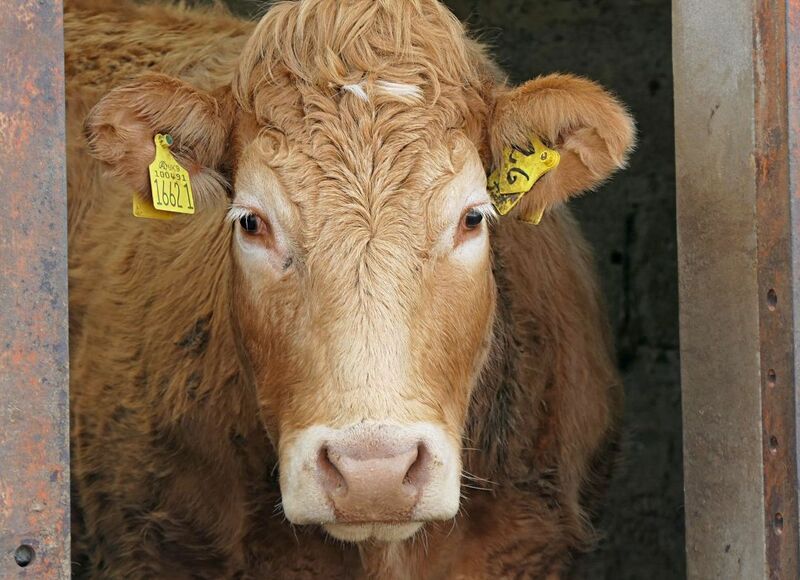“Shootin’ The Bull”
End of Day Market Recap
by Christopher Swift
1/5/2024
Live Cattle:
In my opinion, Craig's work on the Cattle Range has been extremely beneficial towards my analysis. The knowledge of volume of marketing's is very important, and seems like the next two to three weeks will be only second to July for volume of stocker and feeder cattle marketed. So, I look for the next two weeks to help decipher some potential directional price movement. I anticipate cattlemen to be aggressive at the forefront, with expectations of pushing futures higher as well. In the fat cattle market, the division between ample inventory on hand, and dwindling, starting late in the second quarter, remains well intact. Were futures traders to get gamey next week, and push February or April $3.00 higher, I will be looking to market inventory for that time frame in these two months. I won't have as much desire to market June and out, until I can see the placements for December and January. Again, Craig's work helps to see what is coming, as to an increase or decrease of marketing's week over week, and year over year. While I fully understand that not all marketed go on feed, but if elevated volume, then expect elevated placements, or just the opposite if lower volume. I continue to favor spreads of short February or April and long June or August.
I don't expect cattle feeders to push the feeder cattle index to a new high, above $254.10 this year. Few benefited from this price level, especially in hindsight, and clearly the consumer, grocer, restaurant, and packer cared nothing for their shrinking margins. In marketing inventory this year, the division is stark between the three spring months and four fall months. Spring months offer little premium to market into, with fall months already at the levels of the index high. I believe that profit margin will be primarily made in the basis spreads. The wider the negative basis, the more profit potential there is. For spring marketing's, I recommend reviewing the price of futures contract, consider the month you will be marketing in as close to the expiration of a futures contract as possible, and begin laying in price levels you will conduct business, and then live with those marketing consequences. That is where so many tend to miss out on marketing opportunities. If it were not for the three "haves", we would all be in better shape. Unfortunately, could have, would have, and should have, lives' with us daily. So, it boils down to what you can live with, whether made, lost, or just didn't make. Over the weekend I will be building fence options hedge strategies that help to widen basis potential, while still flooring minimum sale price. I will be using the index reading of $254.10 for my bench mark on spring marketing's to see how close I can get a maximum sale price to the index high. When buying cattle to market this fall, futures premiums are already near or equal to the index high. Therefore, some contract months can already produce a minimum sale floor at the index level, while providing predetermined leeway higher, for some additional premium if materializes. Remember, if you are going to use the August contract to hedge inventory you will be marketing on a video sale, prior to expiration of August, you will be susceptible to increased risk of inability to have basis converge. This is important, and if you do not understand this, you need to. It may very well be that your profit potential lies within the basis spread.
For cattle feeders, needing to procure cattle, the opportunity to use the previous positive basis is gone, and is not anticipated to return yet. So, like last year, the cheapest place to buy cattle is today, in the cash markets. My opinion alone is that cattle feeders will be in no hurry to bid themselves into hundreds of dollars per head loss again anytime soon. This is why I believe the basis could be the only profit margin available towards backgrounders. Futures may be carrying premiums for which are never realized in the cash markets.
Grains were sharply lower this week with March corn setting a new contract low and nearing the expiration level of the December '23 contract at $4.56&3/4. The lower corn will help to promote the agenda of growing cattle bigger to help offset fewer cattle. Beans gapped lower on the opening Tuesday morning and haven't looked up since. Traders pushed, and closed beans under what is viewed as their last support of $12.62&1/4 before breaking under $12.00. I anticipate March beans to trade to $10.00.
Bonds were volatile this week, but ended on a more bearish note, due to employment figures and Redbook retail sales having improved significantly. Both the ADP and Unemployment reports this week showed more consumers back at work than guessed. This is good for beef, but bad for interest rates. I don't think this will last long as the employment figures continue to decline month over month, but tend to be surprised with higher than the anticipated guess. Nonetheless, bonds have sold off from the high and most likely going to sort out the changing landscape between inflation and deflation. I have tempered my aspects on a recession just a little. Increased employment and still good retail sales, suggest this is not a recession, yet. However, the softer tone of both retail sales and employment could easily produce a deflationary time frame in which commodities are impacted more than economic factors. What I anticipate now is more of a commodity price deflation, than an economic recession. Further division between consumers and governments' financial status is being seen. With the reports of retail sales and employment this week, it presents a better picture towards the consumer. As governments, at all levels are BROKE, the increased illegal immigration is wreaking havoc on every single entity of government. Like we saw in the cattle market, where this market is very elastic, suggesting that small changes in supply created a very wide price expanse, so too is illegal immigration elastic. The small percentage number of illegal immigrants is making a huge financial impact on governments to take care of them. To throw a little salt on the wound, giving free health care, which is not free, to the illegal immigrants in California, just slaps the face of every tax payer there is, regardless of economic status. That is thanks to California governor Gavin Newsome. Energy was wild this week with multiple $4.00 ranges up and down. I have not been able to turn back to bullish, and if correct on a commodity deflation time frame, I do not anticipate energy prices to be spared.
On the date of publication, Chris Swift did not have (either directly or indirectly) positions in any of the securities mentioned in this article. All information and data in this article is solely for informational purposes. For more information please view the Disclosure Policy here.
Disclaimer: The copyright of this article belongs to the original author. Reposting this article is solely for the purpose of information dissemination and does not constitute any investment advice. If there is any infringement, please contact us immediately. We will make corrections or deletions as necessary. Thank you.







